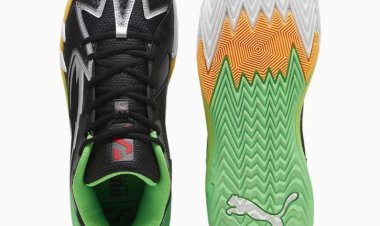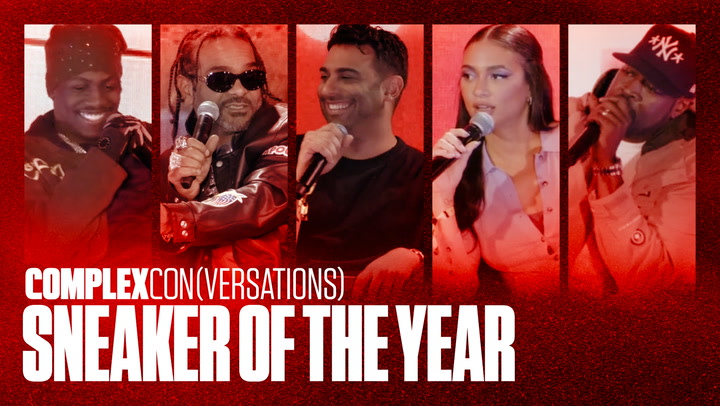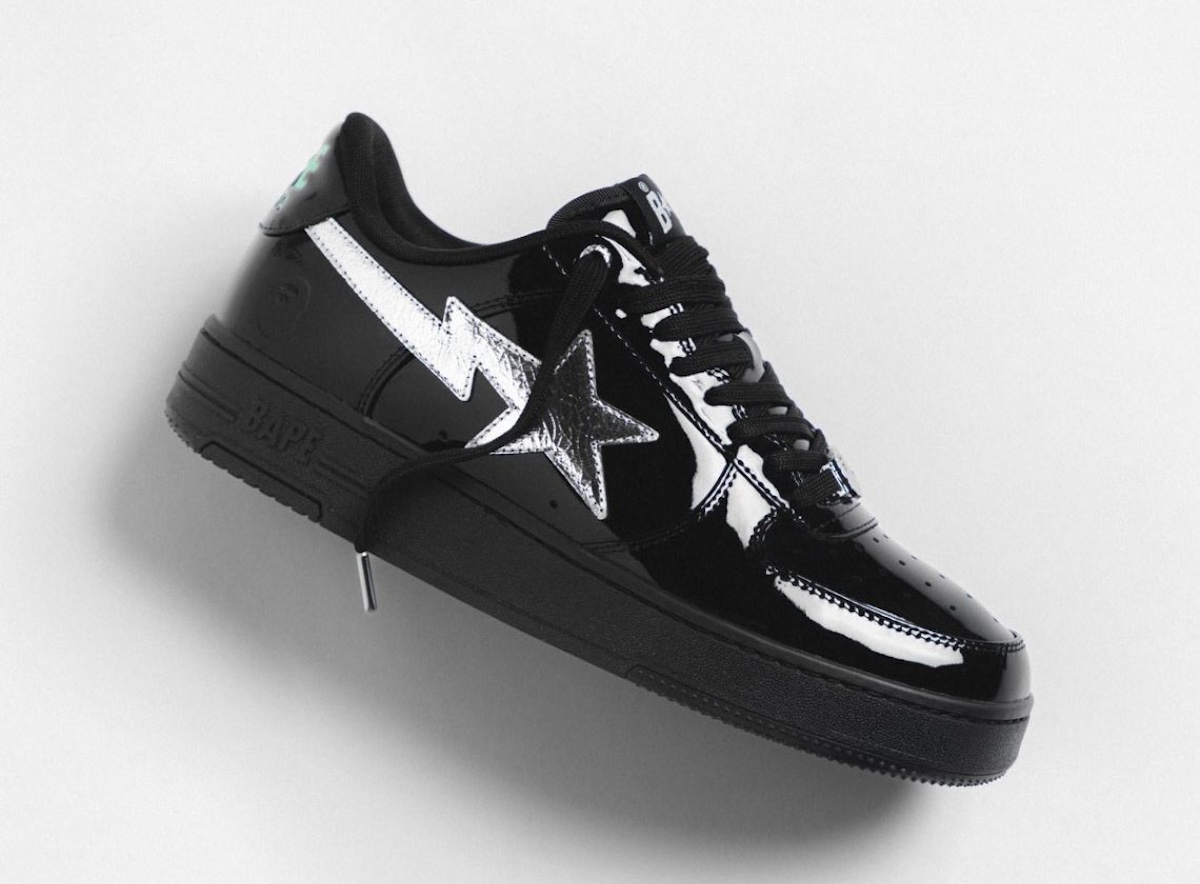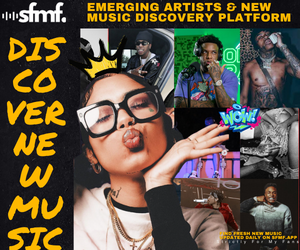Social Status’ Nike Attack Collab Is All About the Layers
The days of shoes being announced and then placed neatly on shelves to be purchased at a customer’s convenience are long gone. Nowadays, the product cycle often starts with a blurry first look at a pair stolen from a factory, a celebrity co-sign and weeks of build-up. You’re often fatigued at the mere thought of the shoe well before it even drops.Brands are no longer provided the opportunity to fully introduce a project they’ve worked on for months, or, in many cases, years, because there’s already been countless conjecture-filled internet discussions declaring them fire or “bricks.” However, brands such as James Whitner’s Social Status are going against the norm by constructing stories before considering product design, leading by sharing narratives -- instead of just product -- with the world. This is accomplished by drawing from personal experiences, and making sure those experiences are familiar to those they portray as well as accessible to those who haven’t lived them.This time around, Whitner’s Social Status has connected with Nike on its recently-reintroduced Attack silhouette, assembling a four-part series that carries “The 1st & 15th” theme. These are the two days each month that food stamps, disability checks and more arrive. No matter how rough things may be, everyone's up and can handle their business on the first and the 15th. There's even an iconic Bone Thugs-N-Harmony song about the feeling of freedom and relief those days bring. As Whitner describes it, the story “explores the art of the hustle” — a concept that those reliant on these two days often have to pick up. Previously, Social Status highlighted free lunch programs in 2021 and its back-to-school initiative last year drew upon the vantage point of kids with its storytelling, an approach the brand is once again employing.Following the “Silver Linings” colorway’s launch last month, the “Social Currency” pair, second out of the quartet, is nearing its launch. On top of this, Social Status has produced a video-based story spread across four chapters in collaboration with Loyd Visuals to accompany the shoes. As the “The 1st & 15th” series continues to unfold, Hypebeast sat down with James Whitner to discuss storytelling, sneaker culture and living meaningfully.How do you ensure that storytelling remains front and center in all of your projects?These designs always start with our why? It informs the story that we want to tell, and from there, we bring that story to the product. Working this way keeps storytelling at the forefront of everything we do. You take the Attack, we’ve built a story with layers around this release that matches the shoe and its tear-away layers.What does this story mean to you?Looking back at the “Free Lunch” story, that no-cost lunch program was crucial to supporting the one meal a day you got -- dinner. Between that, it was about scrambling for the rest of your meals. Scrambling could mean anything from playing three-on-three basketball for pizza to flipping snacks. I was the guy on the court playing ball, but now I have my 11-year-old son getting in trouble for selling snacks. What we wanted to speak to this time around is how kids get started."We’re privileged that people understand there’s a pot of gold at the end of the rainbow -- something tangible with the projects we put together."How do you bring the parts of your audience that lack familiarity with stories like this into the conversation?We’re privileged that people understand there’s a pot of gold at the end of the rainbow -- something tangible with the projects we put together. The audience that is aware of this will come and watch the story, and, in turn, that brings in people who aren’t familiar with the context -- giving them a peek behind the curtain. These moments are crucial because they can help you understand the differences in culture.What better way to accomplish this than by using something as universally loved as sneakers?Exactly. With elements like the food stamp book, people came out and spoke strongly about their personal connection, even people you’d never think were on food stamps. We were able to flip the concept by applying it as social currency, broadening its scale. These moments create conversations and engage the audience in a way that builds a connection between people and helps us see each other. That’s the thing with leaks: when a shoe surfaces early, it messes with our ability to tell our stories the way we want to."Leaks turn the whole thing transactional and nothing about us is transactional."At this point, shoe leaks seem inevitable. How do you handle them?I ask myself, “Why get pissed off at something I can’t control?” Somebody will send me a leak and my response is always, “What do you think?” I can’t say if it exists or not. If it doesn’t exist, it could be a good idea. If it does, I can’t tell you. At the end of the day, please, let us share our story. Leaks turn the whole thing transactional and nothing about us is tra

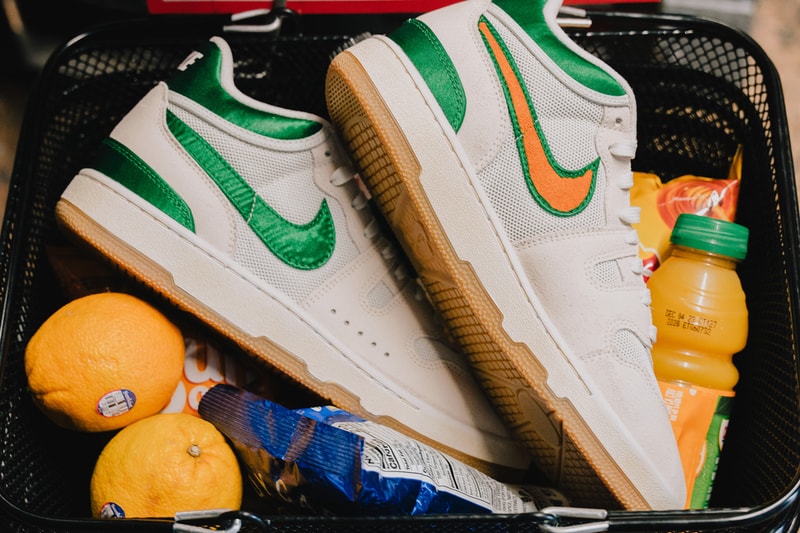
The days of shoes being announced and then placed neatly on shelves to be purchased at a customer’s convenience are long gone. Nowadays, the product cycle often starts with a blurry first look at a pair stolen from a factory, a celebrity co-sign and weeks of build-up. You’re often fatigued at the mere thought of the shoe well before it even drops.
Brands are no longer provided the opportunity to fully introduce a project they’ve worked on for months, or, in many cases, years, because there’s already been countless conjecture-filled internet discussions declaring them fire or “bricks.” However, brands such as James Whitner’s Social Status are going against the norm by constructing stories before considering product design, leading by sharing narratives -- instead of just product -- with the world. This is accomplished by drawing from personal experiences, and making sure those experiences are familiar to those they portray as well as accessible to those who haven’t lived them.
This time around, Whitner’s Social Status has connected with Nike on its recently-reintroduced Attack silhouette, assembling a four-part series that carries “The 1st & 15th” theme. These are the two days each month that food stamps, disability checks and more arrive. No matter how rough things may be, everyone's up and can handle their business on the first and the 15th. There's even an iconic Bone Thugs-N-Harmony song about the feeling of freedom and relief those days bring. As Whitner describes it, the story “explores the art of the hustle” — a concept that those reliant on these two days often have to pick up. Previously, Social Status highlighted free lunch programs in 2021 and its back-to-school initiative last year drew upon the vantage point of kids with its storytelling, an approach the brand is once again employing.
Following the “Silver Linings” colorway’s launch last month, the “Social Currency” pair, second out of the quartet, is nearing its launch. On top of this, Social Status has produced a video-based story spread across four chapters in collaboration with Loyd Visuals to accompany the shoes. As the “The 1st & 15th” series continues to unfold, Hypebeast sat down with James Whitner to discuss storytelling, sneaker culture and living meaningfully.
How do you ensure that storytelling remains front and center in all of your projects?
These designs always start with our why? It informs the story that we want to tell, and from there, we bring that story to the product. Working this way keeps storytelling at the forefront of everything we do. You take the Attack, we’ve built a story with layers around this release that matches the shoe and its tear-away layers.
What does this story mean to you?
Looking back at the “Free Lunch” story, that no-cost lunch program was crucial to supporting the one meal a day you got -- dinner. Between that, it was about scrambling for the rest of your meals. Scrambling could mean anything from playing three-on-three basketball for pizza to flipping snacks. I was the guy on the court playing ball, but now I have my 11-year-old son getting in trouble for selling snacks. What we wanted to speak to this time around is how kids get started.
"We’re privileged that people understand there’s a pot of gold at the end of the rainbow -- something tangible with the projects we put together."
How do you bring the parts of your audience that lack familiarity with stories like this into the conversation?
We’re privileged that people understand there’s a pot of gold at the end of the rainbow -- something tangible with the projects we put together. The audience that is aware of this will come and watch the story, and, in turn, that brings in people who aren’t familiar with the context -- giving them a peek behind the curtain. These moments are crucial because they can help you understand the differences in culture.
What better way to accomplish this than by using something as universally loved as sneakers?
Exactly. With elements like the food stamp book, people came out and spoke strongly about their personal connection, even people you’d never think were on food stamps. We were able to flip the concept by applying it as social currency, broadening its scale. These moments create conversations and engage the audience in a way that builds a connection between people and helps us see each other. That’s the thing with leaks: when a shoe surfaces early, it messes with our ability to tell our stories the way we want to.
"Leaks turn the whole thing transactional and nothing about us is transactional."
At this point, shoe leaks seem inevitable. How do you handle them?
I ask myself, “Why get pissed off at something I can’t control?” Somebody will send me a leak and my response is always, “What do you think?” I can’t say if it exists or not. If it doesn’t exist, it could be a good idea. If it does, I can’t tell you. At the end of the day, please, let us share our story. Leaks turn the whole thing transactional and nothing about us is transactional.
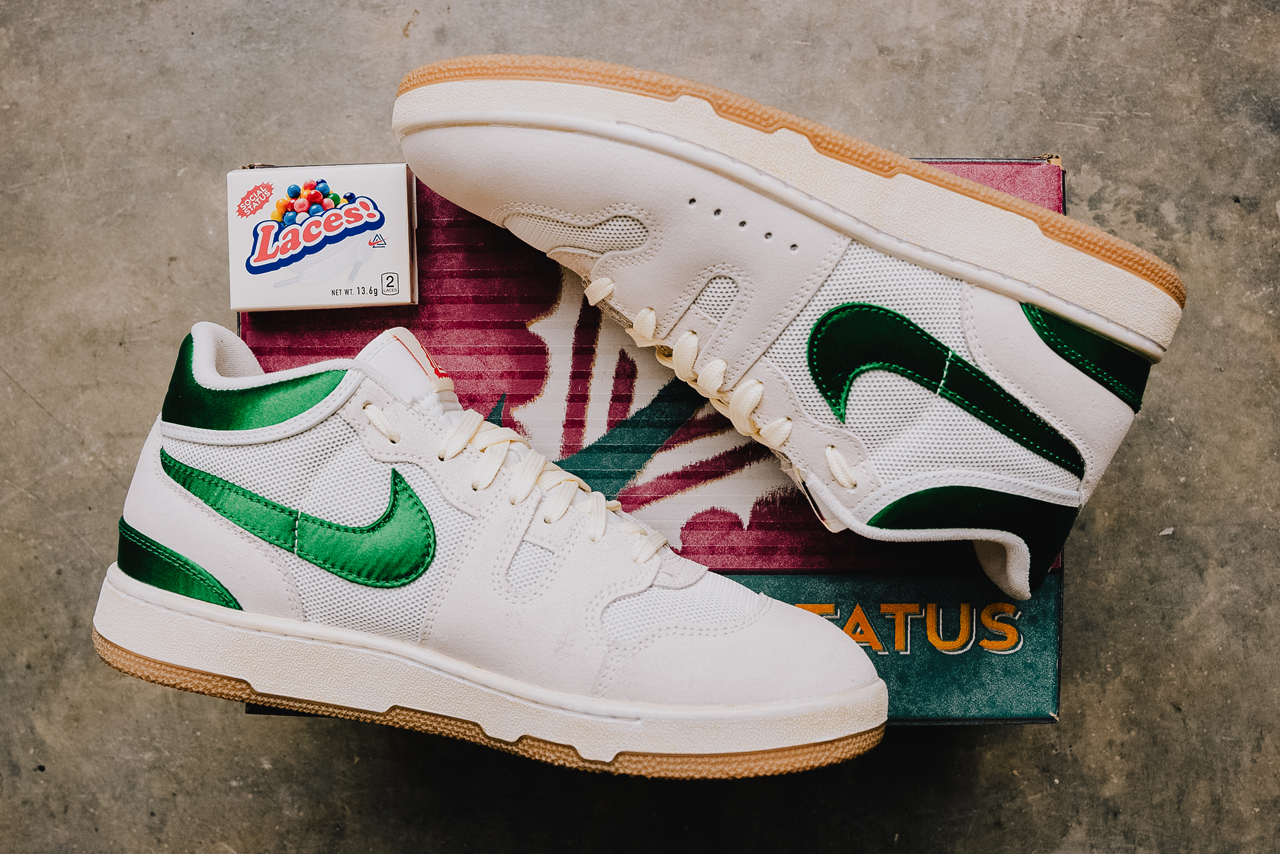
What about the Attack’s return prompted you to use it as a canvas for storytelling?
It’s a shoe that was long overdue for a comeback and we’re very fortunate to be its first collaborator. Part of what we aim to do is help kids discover classics. If you go back to the time of the Attack’s debut, it was never about being told what to wear, you grabbed something dope and you wore it.
The catch to these opportunities is creating something that kids feel like they can just wear. These days, it’s almost more important to say you have a certain pair of shoes, than it is to wear them. We obsessed over details like pricing, doing everything to minimize its cost to get kids to be able to afford it and wear it.
"If I had it my way, we wouldn’t sell a thing, but we couldn’t run a business if we don’t. It’s about pushing humanity forward -- telling stories and bringing people together by creating meaningful experiences."
How do you retain interest from one drop in a series to the next?
It’s the story that brings kids along and engages people as we go. It’s not about stepping in and being the big homie trying to tell kids what’s right, but about creating space to let them make this their own. If I had it my way, we wouldn’t sell a thing, but we couldn’t run a business if we don’t. It’s about pushing humanity forward -- telling stories and bringing people together by creating meaningful experiences. That’s the part I get so much joy from. All of this is to help us see each other differently. You tear down walls when you’re able to see someone differently.

Can you break down where we are at with the video series right now?
You have Q who came through and ended up getting robbed. From here, it’s important to pay attention to the characters surrounding Q, determining who they are and understanding the decisions they make. We want kids to learn from the stories they watch, and here you see that those with proximity to you don’t always have your best interest in mind. Growing up in tough situations, you start to learn how to read people -- figuring out what they want from you before they even know it, which is something we see Q learning in this story. Moving forward, Drip has entered the picture and we’ll see how she can help Q in episode three.
What do you hope people take away from this release?
I can’t spoil the story’s ending, but to put it vaguely: live meaningfully. You can’t get anything without taking a risk and what Q is learning is Business 101. He’s thriving in the first episode but, as with everything, failure happens. If he didn’t start, he would experience nothing. If he sat still, he would experience nothing. Don’t sit still, be active. We need kids to be actionable and challenge the way we do things. They need their own experiences so that they can challenge us and as a result, we all get better.
The Social Status x Nike Attack “Social Currency” is set to release on August 25 both in-store and online at a price of $140 USD via Social Status.












